Koreans are the Best Drivers in the World
7 minute read

If you opened this article with anger, thinking to yourself: “What are they talking about? Koreans can’t drive for ****!”, don’t worry. I agree with you completely. I hope my clickbaity title infuriated you as much as I get by driving in Korea.
Don’t get me wrong—I’m not just a foreign critic. Even though I am Dutch, I’m a Korean driver myself. I got my driver’s license in Korea after I turned 30. Before that, I didn't have a license from the Netherlands or anywhere else. My first driving lesson was in Korea. Here’s my firsthand account and analysis of why driving in Korea can be such a hair-raising experience.
Disclaimer: All the pictures in this article are made with AI, and they are wildly exaggerated and for entertainment purposes only.
Why I Didn't Get My License Sooner
In the Netherlands, we have free public transport for college students, which is fantastic. Plus, we bike everywhere because our country is flat as a pancake—no mountains in sight. If Korea wasn’t 70% mountains, maybe a better biking culture would’ve developed here as well. There were also times when I was temporarily in different countries or simply didn’t have the money for driving lessons.
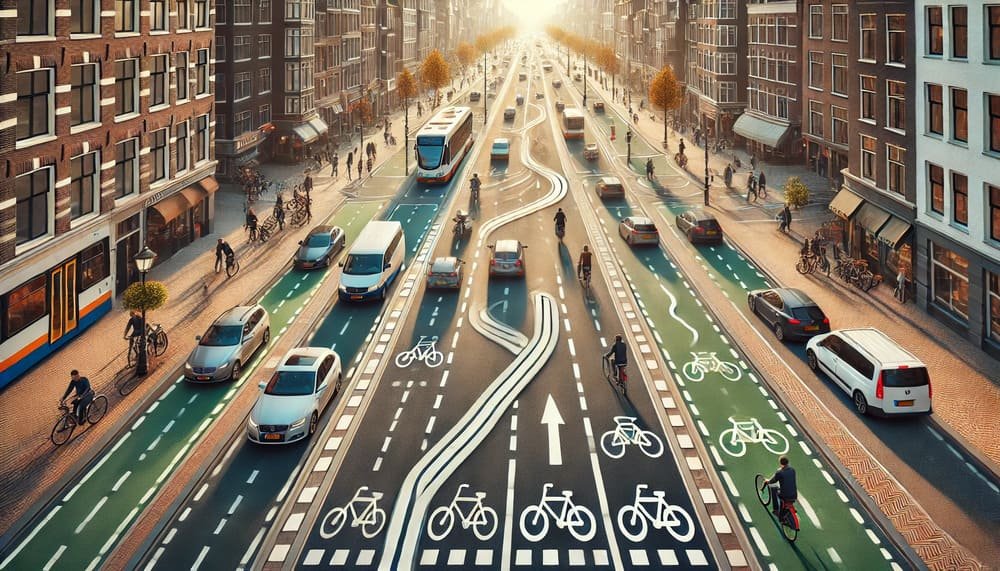
Getting Your Driver’s License in the Netherlands
Getting a driver’s license in the Netherlands is no joke. It’s pricey and takes quite a bit of time. On average, you’re looking at spending around €2,429.50 to €3,060. In Korean Won, that’s about 3.5 to 4.4 million won. This hefty sum covers extensive theoretical and practical training. We’re talking about months of lessons, both in the classroom and behind the wheel. Typically, the whole process can take anywhere from six months to over a year to complete. The goal here is to ensure that when you hit the road, you’re thoroughly prepared for all the complexities of driving safely.
Getting Your Driver’s License in Korea
The process of getting your driver's license in Korea is much more straightforward and considerably cheaper. The total cost, including optional driving lessons, is around 568,000 won, which is roughly €410. The steps involved are fewer, and the tests are less rigorous. You can often wrap up the entire process within a few weeks. This big difference in cost and time really highlights the different priorities in each country’s system. In Korea, conglomerates have pushed for a streamlined, accessible process to boost car sales. While this is great for the economy, it is not the best for ensuring high driving standards.
In a nutshell, getting your license in the Netherlands means spending more time and money but becoming a well-prepared driver. In South Korea, it’s quicker and cheaper, but the easier process leads to more drivers who are less experienced and skilled.
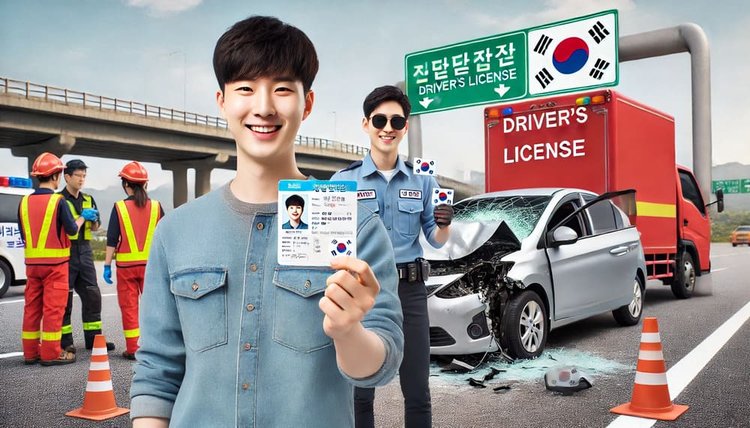
The Dutch Advantage to Driving in Korea
When I started my driving lessons in Korea, my instructor told me that I was lucky to have lived in the Netherlands for most of my life because of our biking culture. We learn traffic laws, rules, and driving safety from a young age since biking is such a big part of our lives. This early exposure gave me a good sense of direction and spatial awareness, which helped me in driving.
It took me 2 weeks and about 800,000 won from start to finish to get my license in Korea. The higher-than-average cost is because I took extra lessons to prepare myself for driving in Korea.
5 Korean Driving Challenges
Once I began driving in Korea, I quickly realized that many Koreans struggle with driving skills and etiquette. Here are some of the most glaring issues:
1. Driving on the Left Lane
Many Korean drivers use the left lane to cruise at or below the speed limit, which is frustrating. In many countries, the left lane is for overtaking only, not for leisurely drives.
2. Illegal Parking
Illegal parking is rampant in Korea. Cars are often parked on sidewalks and crosswalks, obstructing traffic and making it impossible for handicapped people or those with strollers to cross safely.
3. Driving While on the Phone
Despite being illegal, it’s common to see drivers of all ages and genders on their phones. It seems like those Instagram photos of nice restaurants can’t wait.
4. Driving with Hazard Lights On
Hazard lights are meant for emergencies, but many Koreans use them when they’re unsure of where to go or when parking in no-parking zones. This misuse creates confusion and can be dangerous.
5. Selfishness in Traffic
There’s a noticeable lack of consideration for others on the road. Cutting off other drivers, not allowing others to merge, and ignoring pedestrian crossings are common behaviors. Pedestrians often feel unsafe because cars rarely yield, even at crosswalks.
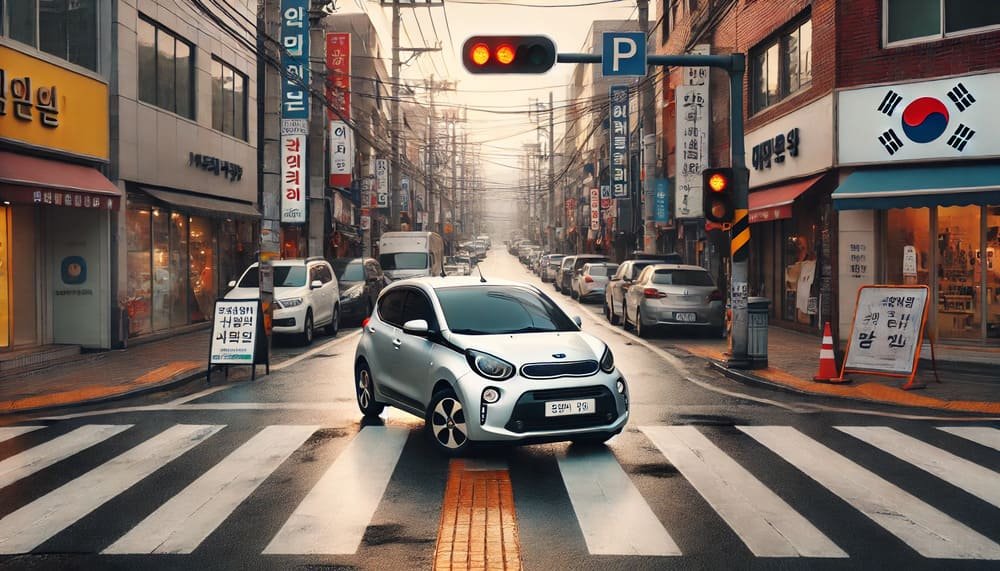
Conglomerate Influence in the Easy License Process
One of the main reasons behind these poor driving habits is the relatively easy and inexpensive process of obtaining a driver’s license in Korea. As mentioned earlier, this ease can be attributed to the pressure from powerful Korean conglomerates, known as chaebols.
These conglomerates have significant influence over various aspects of society, including transportation. They push the government to simplify the licensing process to increase car sales, insurance policies, and other related services. By making it easier and cheaper to get a license, more people can buy cars, which boosts the profits of automobile manufacturers, insurance companies, and service providers.
The government benefits from this arrangement as well. Increased car sales lead to higher tax revenues, and a booming automotive industry supports job creation and economic growth. However, this situation has its downsides. The lax licensing process results in many drivers hitting the roads without adequate skills or knowledge, contributing to the chaotic driving environment.

Driving in the Netherlands vs. Korea
When comparing driving in the Netherlands to driving in Korea, several key differences stand out, reflecting the contrasting driving cultures and regulations in these two countries.
Strict Lane Discipline
In the Netherlands, lane discipline is strictly adhered to. The left lane on highways is reserved exclusively for overtaking. Once the maneuver is completed, drivers are expected to return to the right lane. This practice is reinforced by both law and a strong driving culture that values order and safety. This disciplined approach helps maintain smooth traffic flow and reduces the risk of accidents caused by unpredictable lane changes.
In Korea, however, it's common to see drivers cruising in the left lane at or below the speed limit. This misuse of the overtaking lane can lead to congestion and road rage, as faster drivers are forced to overtake on the right, which can be dangerous. The lack of strict enforcement of lane discipline contributes to a chaotic driving environment.
The amount of times I am stuck behind someone in the left lane is insane. This poses you with a dilemma. I could overtake them on the right, but technically I would be breaking traffic laws if I did that.
Adherence to Parking Rules
Parking in the Netherlands is also strictly regulated. Illegal parking is rare, as violations are met with hefty fines and the risk of towing. Cities are designed to accommodate legal parking spaces, and there is a general respect for parking regulations. This careful planning and enforcement help ensure that sidewalks and crosswalks remain accessible to pedestrians, including those with disabilities or strollers.
In contrast, illegal parking is rampant in Korea. Cars are frequently parked on sidewalks and crosswalks, obstructing pedestrian traffic and creating hazards. This behavior is often overlooked by authorities, leading to widespread disregard for parking laws. The result is a more challenging and unsafe environment for pedestrians.
After having a baby myself, I feel angry a lot when cars are parked on crosswalks, prohibiting me from crossing the road safely with my son. I resorted to reporting most illegally parked cars to the police using a handy app! I reported close to 500 illegally parked cars at the time of writing this article.
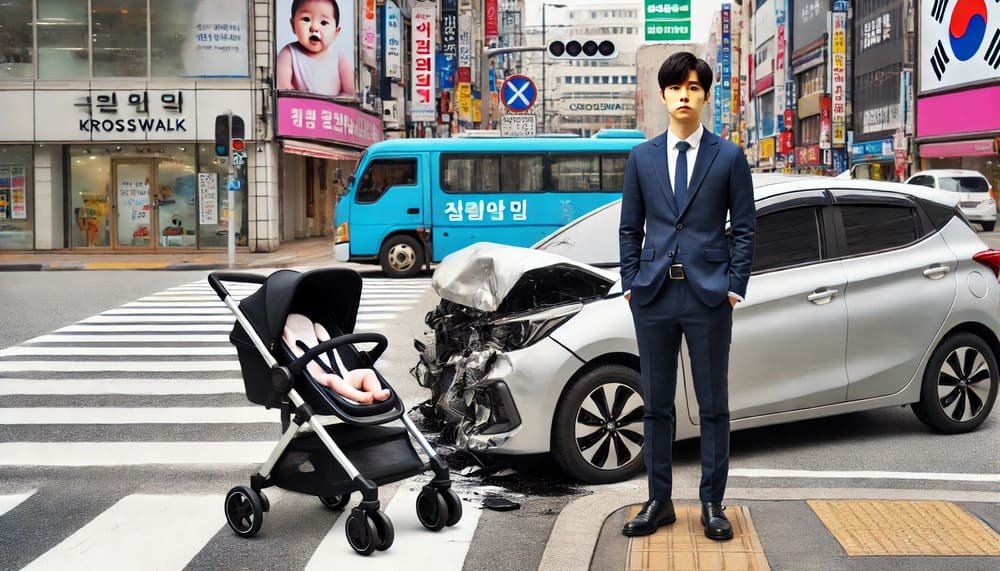
Hands-Free Laws
The Netherlands has stringent hands-free laws. Using a mobile phone while driving is heavily penalized, with significant fines and the potential for license suspension. This law is strictly enforced, and public awareness campaigns emphasize the dangers of distracted driving. As a result, it’s uncommon to see drivers using their phones while on the road.
In Korea, despite similar laws against using mobile phones while driving, enforcement is less strict, and it’s not unusual to see drivers texting or talking on their phones. This lack of enforcement undermines the effectiveness of the law and contributes to higher rates of distracted driving.
I’ve confronted many of them if I spot them on their phone, but most of the time they don’t care a single bit.
Politeness in Traffic
Dutch drivers are known for their politeness and adherence to traffic rules. There is a strong culture of yielding to pedestrians and other vehicles, ensuring a safer and more predictable driving environment. Pedestrian crossings are respected, and drivers generally wait for pedestrians to cross before proceeding.
In Korea, driving can be more aggressive and self-centered. There is a noticeable lack of consideration for others on the road, with drivers frequently cutting off other vehicles, refusing to yield, and ignoring pedestrian crossings. Pedestrians often feel unsafe, as cars rarely stop at crosswalks, forcing them to wait or rush across when there’s a gap in traffic.
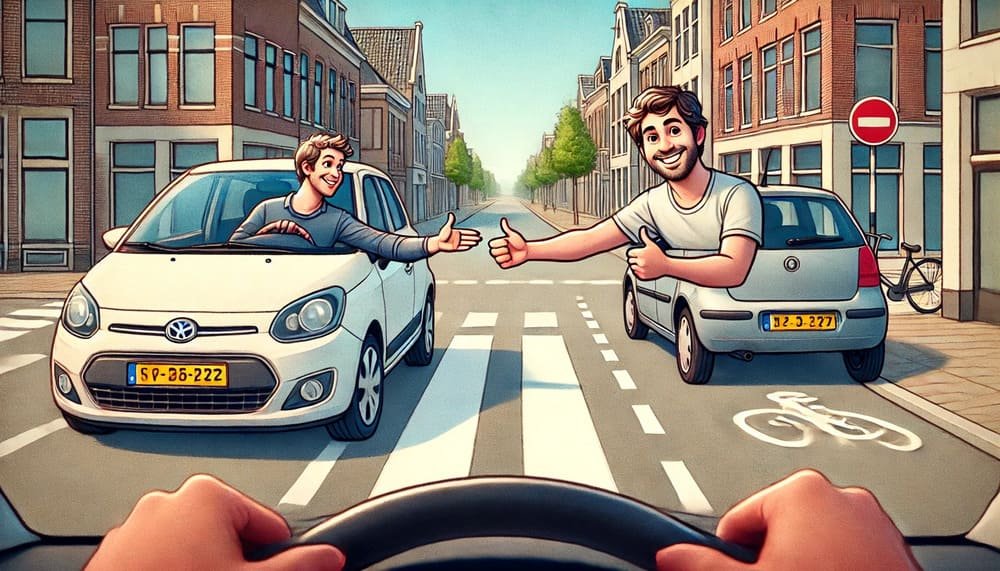
Driving in Korea can be an adventure, to say the least. Understanding the local driving behaviors and the cultural context can help navigate the roads more safely and efficiently. While it may seem harsh to label Koreans as the worst drivers, it’s important to recognize that driving habits are deeply rooted in cultural and societal norms. By adapting to these norms and exercising patience, we can have a more positive driving experience in Korea. Also, before you comment “Drivers of country X are worse!”, ask yourself if we should be comparing Korea to that country.
The differences between driving in the Netherlands and Korea highlight the impact of cultural attitudes, enforcement of laws, and urban planning on driving behavior. In the Netherlands, strict adherence to rules, disciplined lane usage, and a culture of politeness contribute to a safer and more orderly driving environment. Conversely, Korea’s more relaxed enforcement of traffic laws, coupled with aggressive driving habits, creates a more chaotic and hazardous experience on the roads. Understanding these differences can help drivers adapt to local driving cultures and navigate safely in foreign environments.
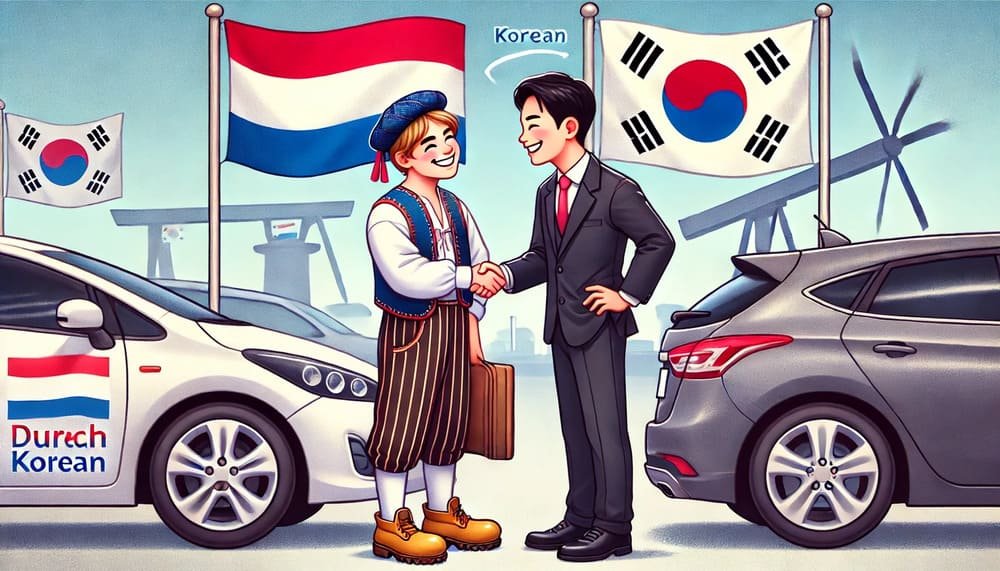
This summer I will visit the Netherlands for the first time since I got my license, and I will be driving there. Let’s hope the Korean driver in me doesn’t come out, but I’m scared they might!

Korea expert since 2011
Related posts

Moving to a new country is like turning the page to an unknown chapter of your life, filled with the excitement of discovery and a fair share of challenges. Step into the Korean dating scene...

Reflect on the unexpected positives of the COVID-pandemic with these 8 reasons why the crisis may have had some silver linings.



